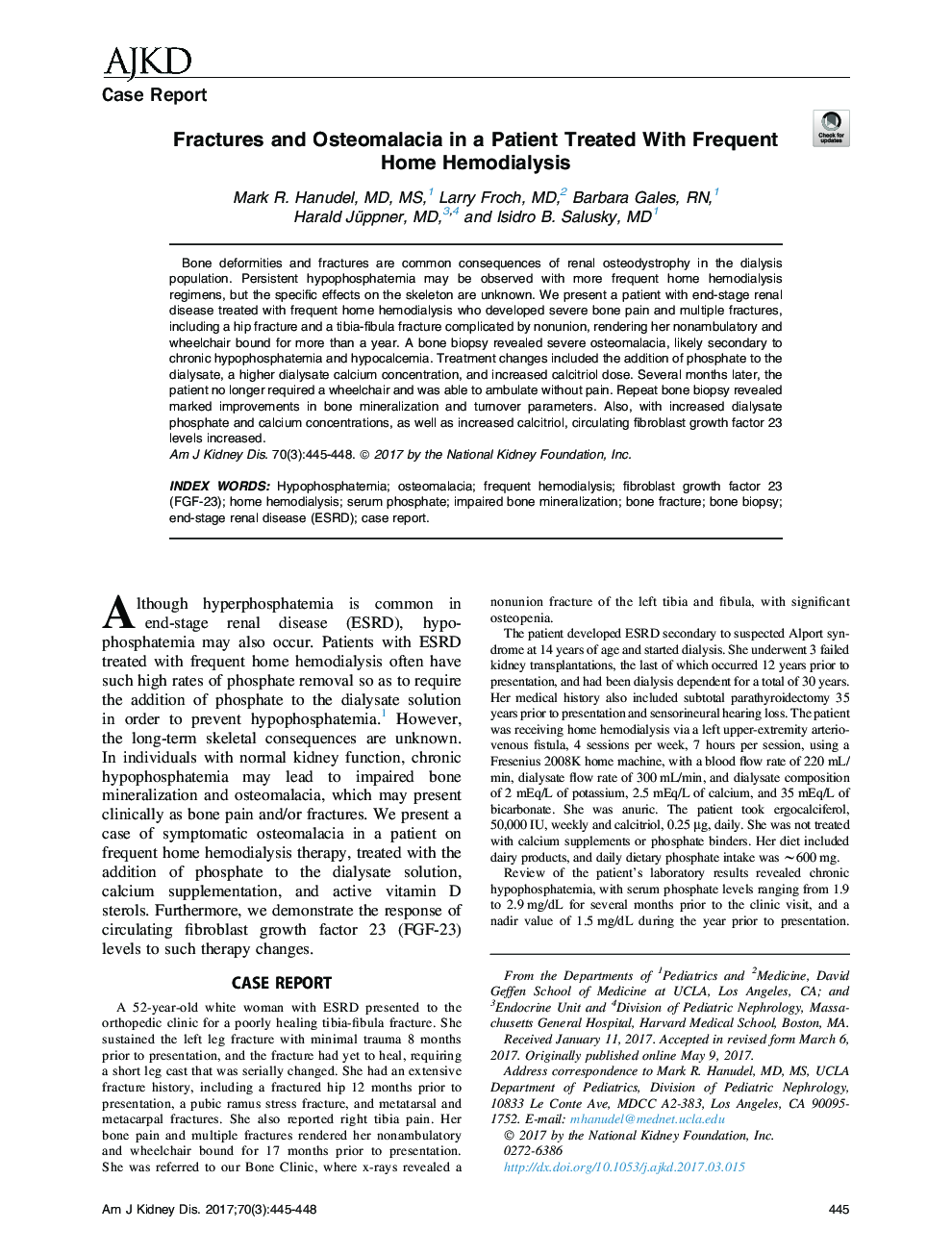| Article ID | Journal | Published Year | Pages | File Type |
|---|---|---|---|---|
| 5685334 | American Journal of Kidney Diseases | 2017 | 4 Pages |
Abstract
Bone deformities and fractures are common consequences of renal osteodystrophy in the dialysis population. Persistent hypophosphatemia may be observed with more frequent home hemodialysis regimens, but the specific effects on the skeleton are unknown. We present a patient with end-stage renal disease treated with frequent home hemodialysis who developed severe bone pain and multiple fractures, including a hip fracture and a tibia-fibula fracture complicated by nonunion, rendering her nonambulatory and wheelchair bound for more than a year. A bone biopsy revealed severe osteomalacia, likely secondary to chronic hypophosphatemia and hypocalcemia. Treatment changes included the addition of phosphate to the dialysate, a higher dialysate calcium concentration, and increased calcitriol dose. Several months later, the patient no longer required a wheelchair and was able to ambulate without pain. Repeat bone biopsy revealed marked improvements in bone mineralization and turnover parameters. Also, with increased dialysate phosphate and calcium concentrations, as well as increased calcitriol, circulating fibroblast growth factor 23 levels increased.
Keywords
Related Topics
Health Sciences
Medicine and Dentistry
Nephrology
Authors
Mark R. MD, MS, Larry MD, Barbara RN, Harald MD, Isidro B. MD,
